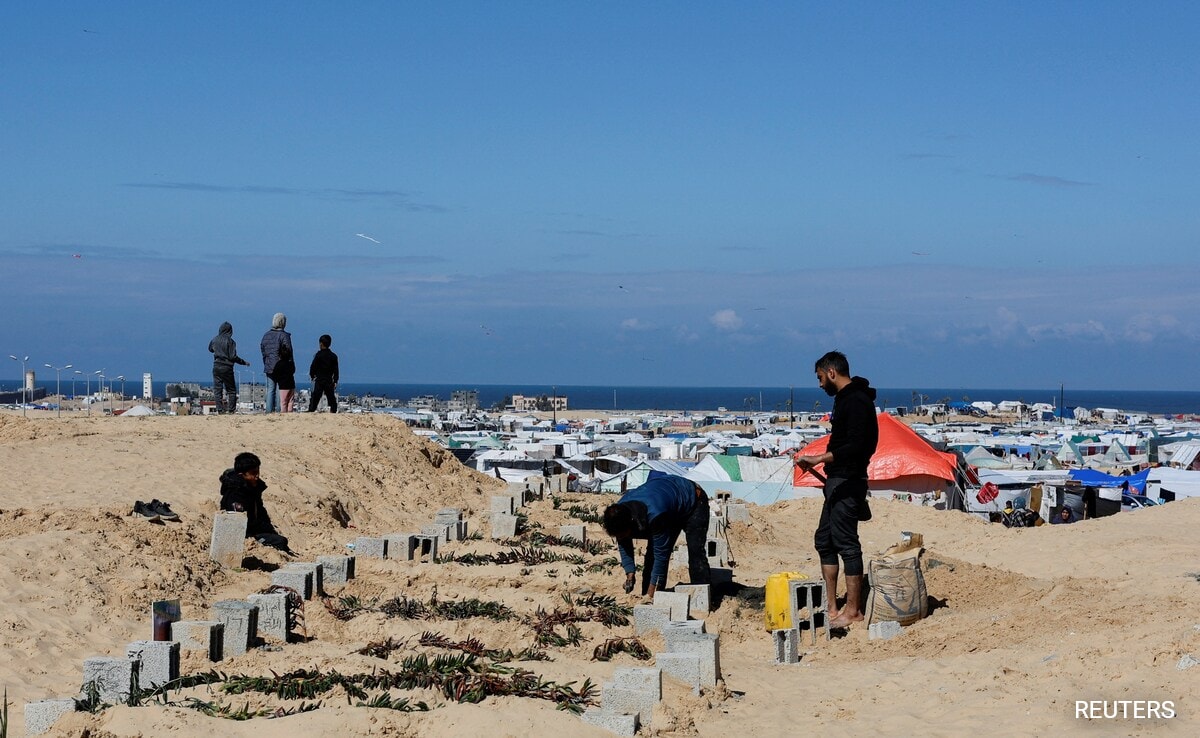
More than half of Gaza’s 2.3 million people are now besieged in Rafah. (document)
Rafa:
Displaced again and again by Israel’s military offensive in Gaza, Mahmoud Amir and his family now set up tents near tombstones in a cemetery in Rafah, one of the last remaining residents of the devastated land. A relatively safe place.
The family is among dozens of people camping at the cemetery, a vast expanse of sand with a view of the Mediterranean on the horizon, because they feel there is less risk from Israeli bombing.
“People are forced to come to this safe place, which is the cemetery for the dead,” said Amir, who was displaced with 11 family members, including children and grandchildren, from the Shati refugee camp in northern Gaza.

Palestinians who fled their homes due to Israeli attacks took refuge in a cemetery in Rafah, in the southern Gaza Strip.
“It was better than living in a residential area where the houses might collapse,” Amer said. Amer spent several weeks elsewhere as the family gradually moved south, escaping the Israeli offensive.
More than half of Gaza’s 2.3 million people are now besieged in Rafah, on the southern edge of the enclave separated from Egypt by the separation wall. Israel has threatened to attack the area with tanks when it completes the battle for Khan Younis in the north.
The cemetery has neat rows of low cement graves built before the war, covered with plants and flowers, inscriptions and peeling paint.
It also has cruder graves, those of those who died in the war: sand piles as long as the bodies, with rough cement blocks at either end.
“Bodies are being brought in for burial every day,” Amir said. “We pray for them, stay with them, and ask for mercy for them.”

A Palestinian girl who fled her home due to Israeli attacks has planted plants on her grave in a cemetery where she took refuge.
Amer said the lack of food and water and the constant fear of military attacks were distressing.
He said: “The dead are being comforted, while those of us who are alive are in pain and going through very difficult conditions. There is no water, no proper aid and the situation is very bad.”
Children ran in small groups between the rows of graves. A girl in a pink tracksuit sat on one of them, plucking tiny pink flowers and carefully placing them into an empty tin can.
“I saw children, our children, playing in and above the graves,” Amir said.
“This has become our life, everything is about death. Even walking now, we see death right in front of us every second.”
According to Israel, the war was started by operatives of the Palestinian Islamist group Hamas, who invaded southern Israel on October 7, killing 1,200 people and kidnapping 253.
Israel, vowing to destroy Hamas and free hostages, launched a sweeping military attack on Gaza that killed more than 27,000 people, according to local health officials.
(Except for the headline, this story has not been edited by NDTV staff and is published from a syndicated feed.)
Follow us on Google news ,Twitter , and Join Whatsapp Group of thelocalreport.in








